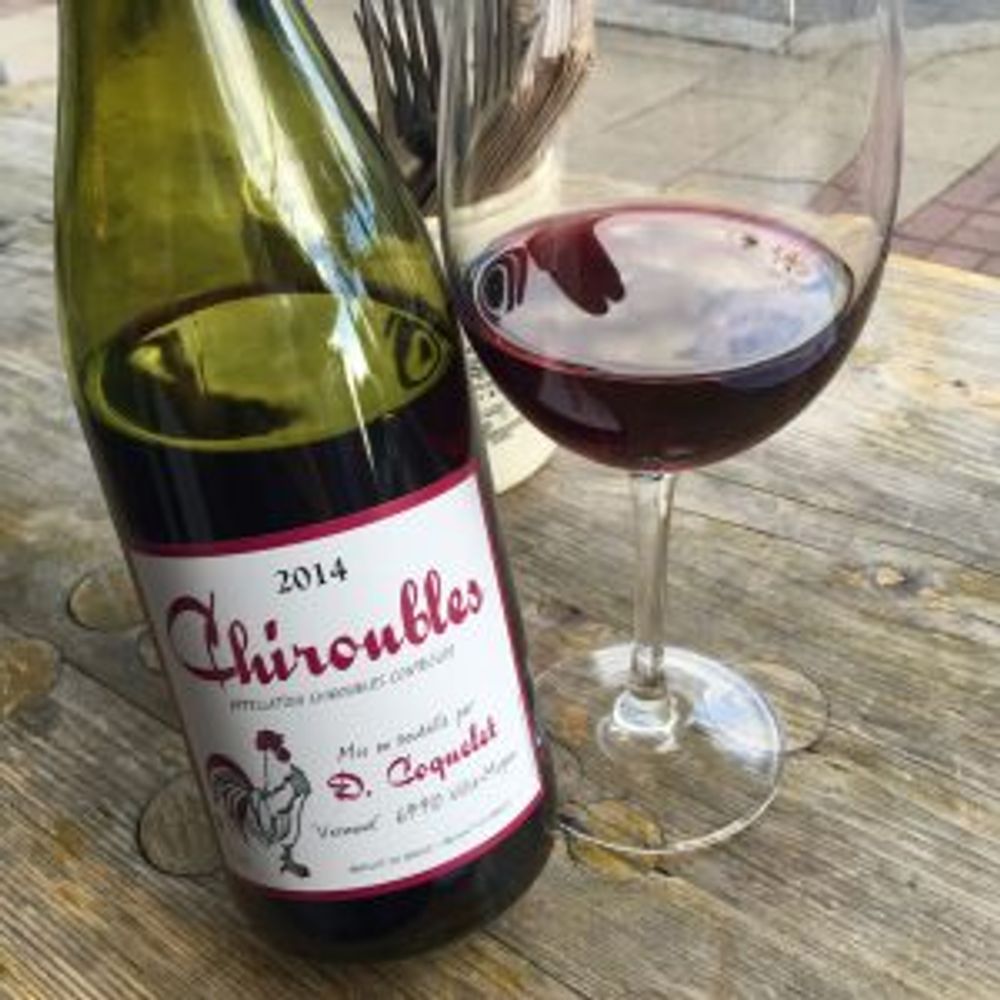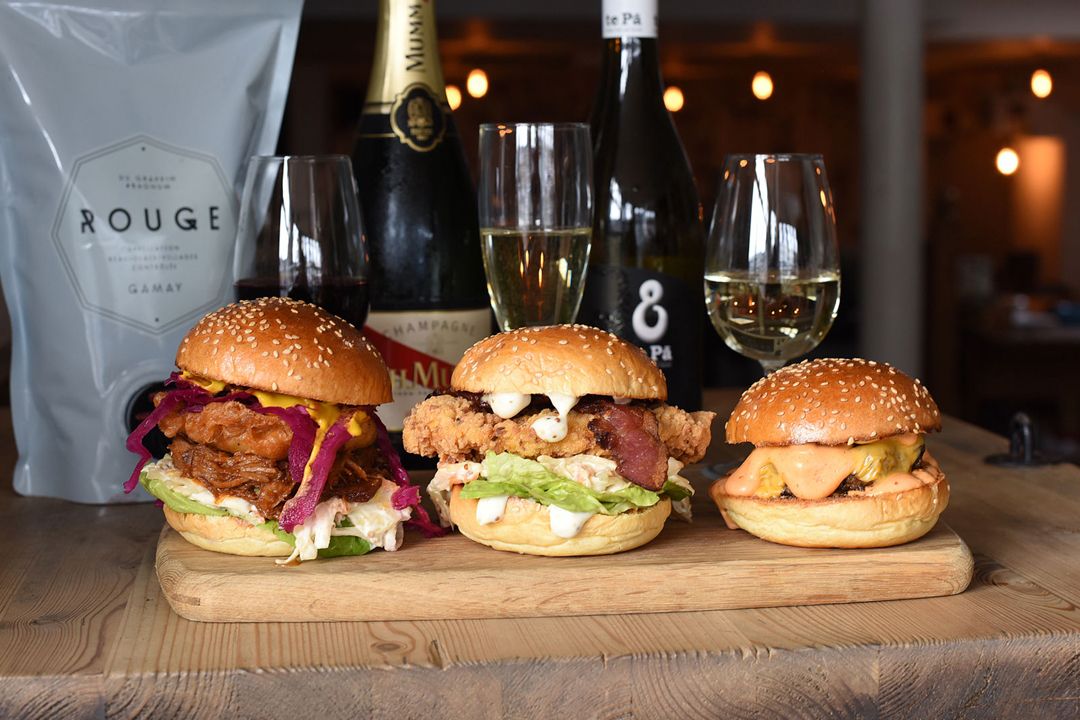Ben’s Canteen will soon be opening its third restaurant in Battersea Power Station and bringing its simple, but very effective burger and wine concept to another part of South London. Here’s Chrissy Rasmussen’s original interview with Walton published last July.

Ben Walton, owner of Ben’s Canteen, South London
What’s the story behind Ben’s Canteen?
I was always that person who spoke about wanting to open a restaurant or bar. After years of boring my friends, I decided I should just go for it. At the time I was working at Vice Magazine and people were always creating things, so I was inspired and decided I could raise just enough from friends and family to get started.
I was also a bit bored of the pub, I love that relaxed spirit but didn’t want tap after tap of beer and Sky Sports on loop. These days, there are loads of options as relaxed “all day” places have cropped up; but at the time I wasn’t sure what direction to go in, so I started the Canteen. We began serving Aussie inspired brunches and then comfort focused dinner options.
You have a really impressive wine selection. How do you choose them and which suppliers do you use?

Ben’s Canteen is brining premium burgers and wine to London’s Clapham Junction and Earlsfield
In November 2015 we decided to focus on our wine offering, over and above cocktails and craft beers. We felt there was a gap in the market. We have a heavily female biased crowd so we didn’t feel focusing too much on craft beer was the right decision and we don’t feel our venues are quite right for being too cocktail led.
We did lots of research. We had only worked with one supplier previously, and our goal became to favour smaller suppliers – we have always had a bias towards working with smaller companies who are trying to do interesting things. So we are working with Red Squirrel, Les Caves de Pyrene, Tutto Wines, Clark Foyster, Vinnaturo, Le Grappin (both of whom specialise in bag/box wine) and Roberson Wine.
As you would imagine from a South West London venue, Sauvignon Blanc and Malbec is a big starting point but actually if we engage our customers then they will open up to new possibilities quite easily. Offering wines by 125ml helps and we are also very happy to give free tasters, plus we have 2-4-1 wines by the glass every Mon-Fri, 5-7pm, so that encourages people to be more adventurous.
Is there one wine in particular that has really sold well for you?

There is certainly an Australian influence to Ben’s Canteen’s look, feel and offer
Well aside from the usual suspects, we’ve made big strides with Rieslings. It helps that our staff have totally got the Riesling bug.
What’s your own personal favourite region?
I will nearly always try a Portuguese wine (red or white) if it’s on the list as I find they’re good and better value than many.
Do you also do spirits? If so, which ones, and which suppliers do you use for these?
We mainly use Enotria&Coe for our spirits and we have a nice mix of mainstream and more boutique spirits. We specialise in Gin and Tonics and Vodka Sodas and we have some cracking spirits as part of this such as Little Bird Gin, Fair Quinoa Vodka, Opihr Gin and Black Cow Pure Milk Vodka.
You’re currently doing American wine time. Great idea also. How did you decide to do this?
Most months we find a new supplier to work with. We came across Roberson Wine via the LDN Cru, the urban winery (in Earls Court of all places!) who make some excellent wines, which we stock. The two companies are linked and Roberson introduced us to some lovely, and less usual, American wines and what with the 4th July looming at the time, it made sense.
All three of the wines I had could be considered ‘natural’ (see tasting notes below). Is this a conscious decision?

Yes, it was a conscious decision to go down the natural, low intervention route as these wines fascinate me. They’re mind blowing compared to what I used to think wine was all about. That said, we are a neighbourhood outfit, in slightly more conservative parts of town, so we have balanced our offerings and haven’t gone all out on the natural front. Perhaps if we were more Central or East then we would but I’m always keen to add more of these types of wine, not least because it’s so hard to find them in SW London.
Do you have a lot of customers asking for natural wine?
Increasingly so, in fact a couple of nights ago, a group who were having a leaving do came to the Canteen just because they love the Spanish orange wine we have so much. Brilliant!
How do you find selling wines with trickier names? Are consumers wary, or are they beginning to trust more in unusual wine?
It can certainly be tricky, if just left on a list then people aren’t likely to try them. We have to engage people (not bore them!) and of course free tasters tend to be the best ways. We also like to invite suppliers down for the night and offer all of their wines by the glass.
If you could visit anywhere wine-related in the world where would it be?
The Vinteloper pop-up Urban Winery in Melbourne looked pretty cool to me!
And finally, if you could make one wine, what would it be?
Well of course this is an impossible question because I find mood is so important to having that right wine. But as I type this, it is super hot, so a dry cold white wine with a fair amount of minerality from some underrated fun region of the winemaking world (with amazing views and a cool breeze) sounds good!
Putting the wines to the test…

Coquelet Chiroubles 2014
Damien Coquelet is the stepson of Georges Descombes. He vinifies in the appellations Beaujolais-Villages, Morgon and Chiroubles. He bottled his first vintage at just 20 years old in 2007, having been mentored by Descombes.
When you think about really pure, natural Beaujolais, this is a brilliant example. It is an organic, low sulphur, natural yeast and minimal intervention wine that succeeds in its aim of producing a Gamay that really expresses its origin. I strongly believe that the thin-skinned Gamay is one of the varietals most capable of expressing a sense of place, possibly due to its distinct delicacy that allows soil type to shine through. This is one of them.
Tasting notes:
This is a really bright wine. Glowing fruit-forward notes of fresh cherries, raspberries and strawberries, with a slightly fresh, herbal approach. It’s the ideal summer wine, but it’s also serious, with good grip and gentle tannins. From Chiroubles, which lies at a high altitude and on very poor, granite based soil, which is what I feel leads to this signature grip. It also has a distinct zippy minerality running through it.

Orsi Vigneto San Vito: Posca Bianca NV
This is a NV wine, something that’s still very rare. It’s bottled to order and replenished with the youngest wine. A blend of majority Pignoletto.
From Bologna’s hillsides, Federico Orsi and Carola Orsi Pallavicino cultivate biodynamic vineyards. The vines are neither fertilised nor irrigated and the earth’s natural humus improves itself year on year. Natural winemaking with indigenous yeasts, no fining or filtering.
Tasting notes:
Pignoletto is an intriguing grape. It has such high tannin that sometimes it can almost be mistaken for an orange, but here it’s most definitely a white wine – but one with a bite-y character. It’s still exuberantly fresh and thirst quenching. Enjoyable saline characteristics and a round, slight fatness but combined with this fresh approach means this is unlike any other white I’ve come across. It’s truly unique and terroir expressive.

Beck Burgenland Blaufränkisch Alte Lagen 2013
This is an extremely impressive Austrian Pinot Noir that can seriously rival many Pinots. It hails from Gols, Burgenland. Today, Judith Beck cultivates 15 ha of vines under organic and biodynamic viticulture. Here, sandy loam and limestone soils give silkiness and light bodied yet rich Blaufränkisch. Natural yeasts, with maturation in large wooden acacia barrels allows the wine to breathe.
Tasting notes: A beautifully delicate wine, that is surprisingly richer than I had expected. Originally, cherries shine through on the nose with hints of plum, followed by dominant black fruits such as cassis and blackcurrant. Very gently chewy, this is a really moreish wine that finds the perfect balance of ripeness for Pinot.
*This article was published in July, 2016 and the facts and information are accurate to that time.
Follow Christina Rasmussen’s journey through wine on Twitter and through her blog








































